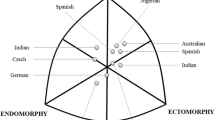Abstract
Traumatic brain injury (TBI) has long been known as a cause of hypopituitarism, and it is characterized by a high prevalence of neuroendocrine abnormalities. Boxing, one of the most common combative sports, may also result in TBI. As far as we know, pituitary functions including GH status have not been investigated in boxers. Therefore, in this preliminary study, we have assessed the pituitary functions in boxers. Eleven actively competing or retired male boxers with a mean age of 38.0±3.6 yr and 7 age-, sex- and BMI-matched healthy non-boxing controls were included in the study. Biochemical and basal hormonal parameters including IGF-I levels were measured. To assess GH secretory status in boxers and healthy controls, GHRH (1 μg/kg) + GHRP-6 (1 μg/kg) test was performed. After GHRH + GHRP-6 test, mean peak GH level in boxers and in controls were 10.9±1.7 and 41.4±6.7 μg/l, respectively (p<0.05). Peak GH levels in 5 (45%) boxers were found to be lower than 10 μg/l and considered as severe GH deficient. In the control group, mean IGF-I levels (367±18.8 ng/ml) were significantly higher than that obtained in boxers (237±23.3 ng/dl) (p< 0.01). All the other pituitary hormones were normal including ADH as no signs and symptoms of diabetes insipidus. There was a significant negative correlation between peak GH levels and boxing duration, and between peak GH levels and number of bouts. In conclusion, we think that boxing is a cause of TBI, and GH deficiency is very common among boxers. Further studies including large number of boxers, both professional and amateur, are needed to clarify pituitary dysfunction in boxers.
Similar content being viewed by others
References
Lieberman SA, Oberoi AL, Gilkison CR, Masel BE, Urban RJ. Prevalence of neuroendocrine dysfunction in patients recovering from traumatic brain injury. J Clin Endocrinol Metab 2001, 86: 2752–6.
Whitman S, Coonley-Hoganson R, Desai BT. Comparative head trauma experiences in two socioeconomically different chicago-area communities: a population study. Am J Epidemiol 1984, 119: 570–80.
Kelly DF, Gonzalo IT, Cohan P, Berman N, Swerdloff R, Wang C. Hypopituitarism following traumatic brain injury and aneurysmal subarachnoid hemorrhage: a preliminary report. J Neurosurg 2000, 93: 743–52.
Daniel PM, Treip CS. The Pathology of the pituitary gland in head injury. Mod Trends Endocrinol 1961, 2: 55–68.
Kornblum RN, Fisher RS. Pituitary lesions in craniocerebral injuries. Arch Pathol 1969, 88: 242–8.
Iglesias P, Gomez-Pan A, Diez JJ. Spontaneous recovery from post-traumatic hypopituitarism. J Endocrinol Invest 1996, 19: 320–3.
Hillier SL, Hiller JE, Metzer J. Epidemiology of traumatic brain injury in South Australia. Brain Inj 1997, 11: 649–59.
Powell JW. Cerebral concussion: causes, effects, and risks in sports. J Athl Train 2001, 36: 307–11.
Zhang L, Ravdin LD, Relkin N, Zimmerman RD, Jordan B, Lathan WE, Ulug AM. Increased diffusion in the brain of professional boxers: a preclinical sign of traumatic brain injury? AJNR Am J Neuroradiol 2003, 24: 52–7.
Popovic V, Leal A, Micic D, et al. GH-releasing hormone and GH-releasing peptide-6 for diagnostic testing in GH-deficient adults. Lancet 2000, 356: 1137–42.
Altman R, Pruzanski W. Post-traumatic hypopituitarism. Anterior pituitary insufficiency following skull fracture. Ann Intern Med 1961, 55: 149–54.
Richard I, Rome J, Lemene B, Louis F, Perrouin-Verbe B, Mathe JF. Post-traumatic endocrine deficits: analysis of a series of 93 severe traumatic brain injuries. Ann Readapt Med Phys 2001, 44: 19–25.
Benvenga S, Vigo T, Ruggeri RM, et al. Severe head trauma in patients with unexplained central hypothyroidism. Am J Med 2004, 116: 767–71.
Kelestimur F. Sheehan’s Syndrome. Pituitary 2003, 6: 181–8.
Valenta LJ and De Feo DR. Post-traumatic hypopituitarism due to a hypothalamic lesion. Am J Med 1980, 68: 614–7.
Ohhashi G, Tani S, Murakami S, Kamio M, Abe T, Ohtuki J. Problems in health management of professional boxers in Japan. 2002, 36: 346–52.
Agha A, Tormey W, Mylotte D, et al. Neuroendocrine dysfunction in the acute phase of traumatic brain injury. Clin Endocrinol.(Oxf) 2004, 60: 584–91.
Consensus guidelines for the diagnosis and treatment of adults with growth hormone deficiency: summary statement of the Growth Hormone Research Society Workshop on adult growth hormone deficiency. J Clin Endocrinol Metab 1998, 83: 379–81.
Bates AS, Evans AJ, Jones P, Clayton RN. Assessment of GH status in adults with GH deficiency using serum growth hormone, serum insulin-like growth factor-I and urinary growth hormone excretion. Clin Endocrinol (Oxf) 1995, 42: 425–30.
Molitch ME. Diagnosis of GH deficiency in adults—how good do the criteria need to be? J Clin Endocrinol Metab 2002, 87: 473–6.
Author information
Authors and Affiliations
Corresponding author
Rights and permissions
About this article
Cite this article
Kelestimur, F., Tanriverdi, F., Atmaca, H. et al. Boxing as a sport activity associated with isolated GH deficiency. J Endocrinol Invest 27, RC28–RC32 (2004). https://doi.org/10.1007/BF03345299
Accepted:
Published:
Issue Date:
DOI: https://doi.org/10.1007/BF03345299




